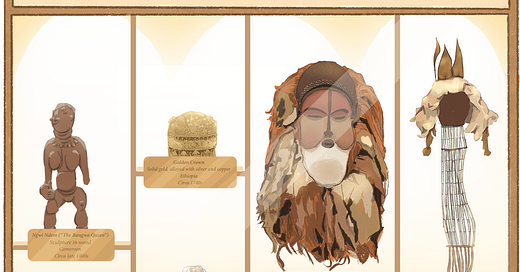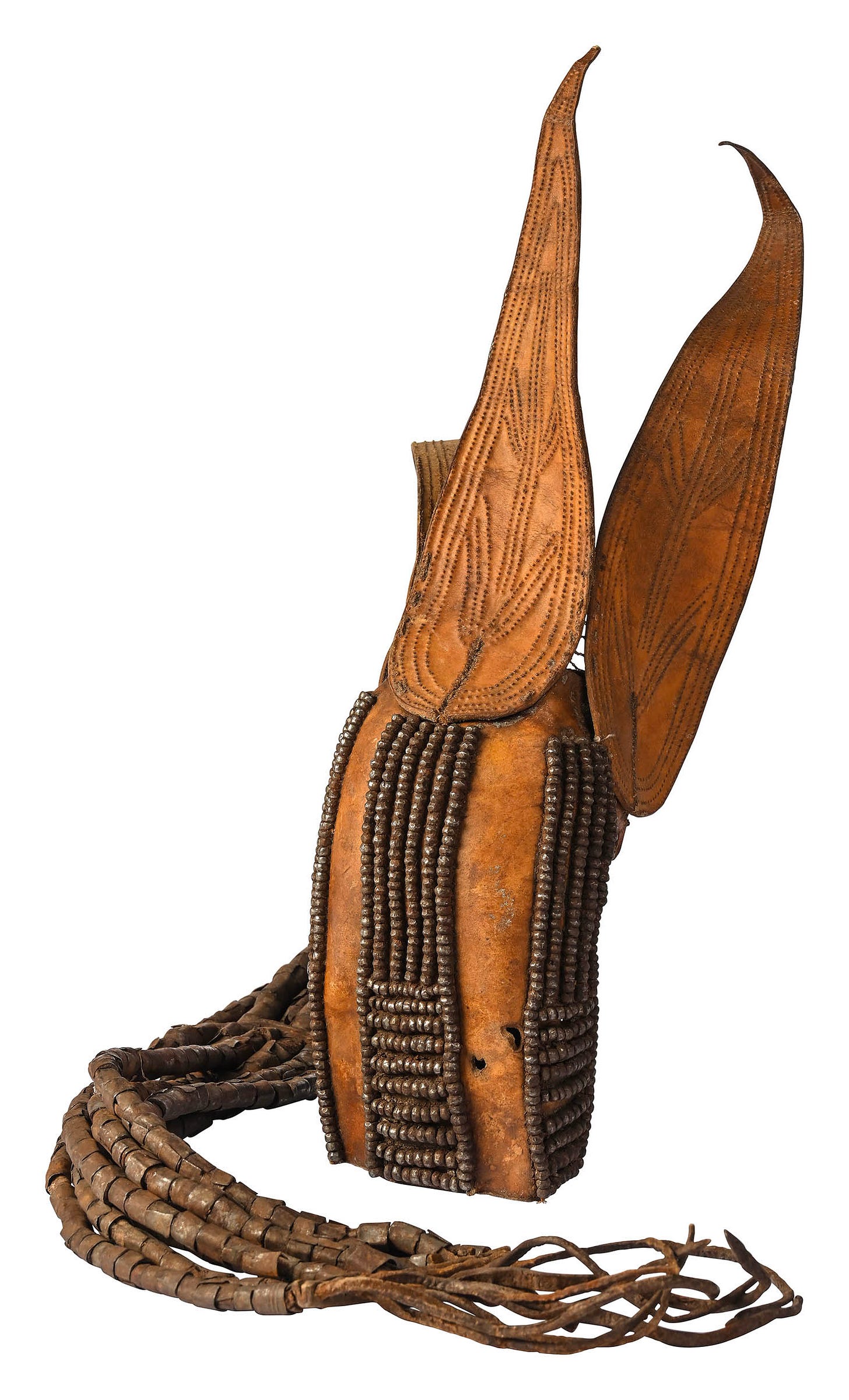Curated by Shola Lawal | Art direction by Wynona Mutisi
The Museum of Stolen History is a new series by The Continent that tells the stories of some of Africa's most significant artefacts.
The ekori – headgear worn by the nomadic Herero and Himba people in what is now Namibia – scared German missionaries so much that they forbade women from wearing it, and branded it as “devilish”.
The ekori is made from leather pieces stitched together and decorated with iron beads or tortoise shells. Usually secured with a band, the pointy ekori was worn to signify a woman’s status. At wedding ceremonies, the bride’s mother would place on her daughter’s head a finely decorated ekori, featuring intricate stitching patterns and pointed flaps that symbolised cow horns. For the semi-pastoralist Herero tribes, cattle were the only real marker of wealth and therefore had particular cultural significance. The ekori paid tribute to that belief.
Despite the restrictions they faced, Herero women would eventually find ways to adapt their fashion, even after a long period of harrowing suffering at the hands of German colonial forces.
It began in January 1904. Herero and Nama leaders led a revolt against German colonial soldiers, killing as many as a hundred men of the German colonial army as tensions around a planned displacement of locals grew. At first, the rebels made quick gains. Then the feared German General, Lothar von Trotha, skilled at subjugating local populations across the continent, took command and ordered scorched earth policies that changed the course of the war.
By August 1904, the German soldiers were winning, but it was the Battle of Waterberg that would seal the defeat – and the eventual decimation of the Hereros. There, Von Trotha commanded his soldiers to kill every last Herero. German soldiers drove not just the Herero fighters, but also their women and children, into the Omaheke Desert, which cut them off from water supplies. The troops also went a step further to poison water holes in the desert. Tens of thousands would die of dehydration. After that, German soldiers drove the survivors, most of them women, and survivors from the Nama group who had also faced an extermination campaign, into concentration camps.
In the camps, women were “rented” to German industrial companies for labour, or to individuals who often sexually abused them. They were also given horrid tasks, such as scraping skin off the skulls of fallen Herero and Nama soldiers in the war, so soldiers could send them home for “research”. By the time the camps were closed in 1907, over half of the Herero and Nama populations had been wiped out.
Although a 1985 United Nations report declared it was an attempt at the first genocide of the 20th century, it was not until 2015 that Germany acknowledged there had been an attempt to exterminate the people of Namibia. Years of trauma have passed down from generation to generation, according to Esther Muinjangue, a Namibian politician and activist, speaking in a 2022 speech in Berlin while advocating for reparations.
In the decade after their freedom from the concentration camp, Herero women began adapting their fashion to their circumstances. Instead of loincloths, they began to wear full-length cloth dresses modelled after the Victorian-style dresses of the missionaries and colonists. The pointy leather ekori was replaced with a flattened, but no less elaborate cloth headgear: the otjikaiva, or “headgear made from fabric”. Today, the dress and hat are worn with pride at major events.
Many artefacts and human remains stolen by German colonial officers and German civilians continue to be exhibited in German museums.
One ekori is shown at the Burg Mylau Museum, in Germany’s southern Saxony region. It was donated in 1904 by Ernst Bernhard Kandler, a locksmith who sailed to the then-German Southwest Africa looking for a job.
According to the museum, its origins are still unclear, but because the donation date preceded the start of the genocide in 1904, the museum says it can be concluded that this ekori, at least, did not originate specifically from the war of extermination against the Herero.






